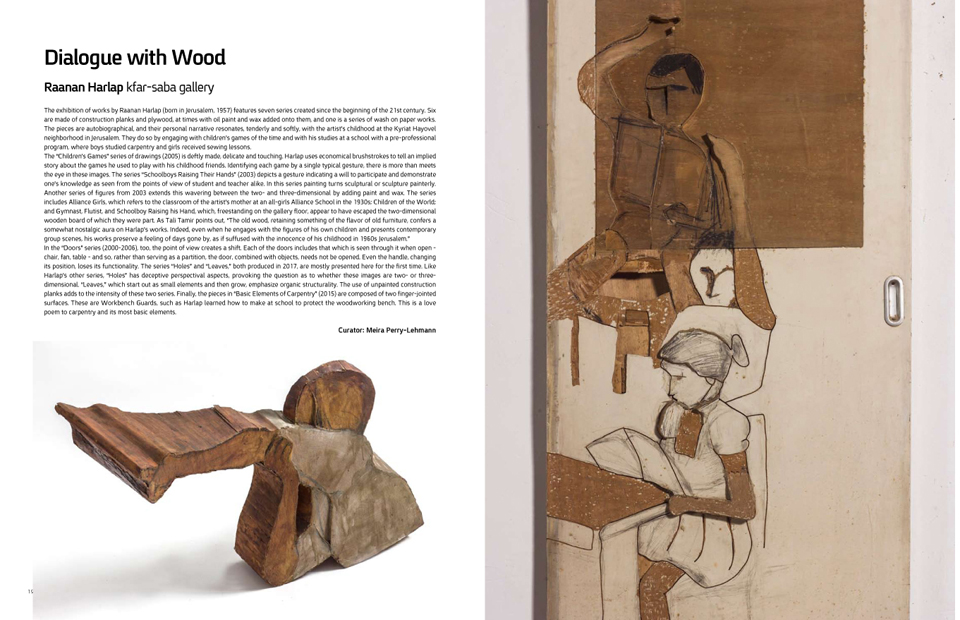
| Home Page | Editor Notices | Museums | Galleries | Publication | Donation | Contact Us |


 | |||||||||||||||
| |||||||||||||||


| |||||||||||||||
| Dialogue with Wood / Raanan Harlap kfar-saba gallery |
The exhibition of works by Raanan Harlap (born in Jerusalem, 1957) features seven series created since the beginning of the 21st century. Six are made of construction planks and plywood, at times with oil paint and wax added onto them, and one is a series of wash on paper works. The pieces are autobiographical, and their personal narrative resonates, tenderly and softly, with the artist’s childhood at the Kyriat Hayovel neighborhood in Jerusalem. They do so by engaging with children’s games of the time and with his studies at a school with a pre-professional program, where boys studied carpentry and girls received sewing lessons. The “Children’s Games” series of drawings (2005) is deftly made, delicate and touching. Harlap uses economical brushstrokes to tell an implied story about the games he used to play with his childhood friends. Identifying each game by a single typical gesture, there is more than meets the eye in these images. The series “Schoolboys Raising Their Hands” (2003) depicts a gesture indicating a will to participate and demonstrate one’s knowledge as seen from the points of view of student and teacher alike. In this series painting turns sculptural or sculpture painterly. Another series of figures from 2003 extends this wavering between the two- and three-dimensional by adding paint and wax. The series includes Alliance Girls, which refers to the classroom of the artist’s mother at an all-girls Alliance School in the 1930s; Children of the World; and Gymnast, Flutist, and Schoolboy Raising his Hand, which, freestanding on the gallery floor, appear to have escaped the two-dimensional wooden board of which they were part. As Tali Tamir points out, “The old wood, retaining something of the flavor of old furniture, confers a somewhat nostalgic aura on Harlap’s works. Indeed, even when he engages with the figures of his own children and presents contemporary group scenes, his works preserve a feeling of days gone by, as if suffused with the innocence of his childhood in 1960s Jerusalem.” In the “Doors” series (2000-2006), too, the point of view creates a shift. Each of the doors includes that which is seen through it when open – chair, fan, table – and so, rather than serving as a partition, the door, combined with objects, needs not be opened. Even the handle, changing its position, loses its functionality. The series “Holes” and “Leaves,” both produced in 2017, are mostly presented here for the first time. Like Harlap’s other series, “Holes” has deceptive perspectival aspects, provoking the question as to whether these images are two- or three-dimensional. “Leaves,” which start out as small elements and then grow, emphasize organic structurality. The use of unpainted construction planks adds to the intensity of these two series. Finally, the pieces in “Basic Elements of Carpentry” (2015) are composed of two finger-jointed surfaces. These are Workbench Guards, such as Harlap learned how to make at school to protect the woodworking bench. This is a love poem to carpentry and its most basic elements. Curator: Meira Perry-Lehmann Read more  |
| all rights reserved - CAN ISRAELI ART REALITY |
| סייבורג מחשבים - בניית אתרים |